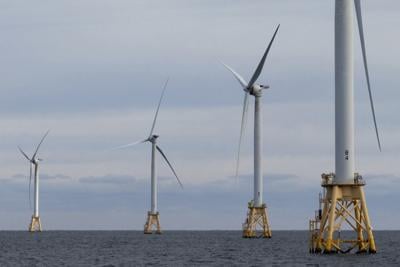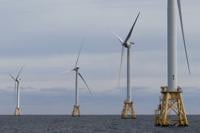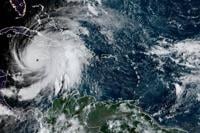HALIFAX - Four areas off Nova Scotia’s coast have been designated for offshore wind development, as the province looks to become a key player in supplying Canada’s future energy needs.
The announcement Tuesday followed public consultations on five offshore areas that had been proposed by the provincial and federal governments in March.
French Bank, Middle Bank and Sable Island Bank, all located south of Nova Scotia’s Eastern Shore, and Sydney Bight, northeast of Cape Breton, have been chosen, comprising a total area of 12,549 square kilometres.
Kim Doane, executive director of energy resource development with Nova Scotia's Energy Department, said the fifth area under study — Western/Emerald Bank — was dropped for now because of its fish conservation zones and use by the military.
She said the area also required more “up front work” to better understand shipping routes.
“We are not eliminating Emerald Bank, we are just deferring it for future consideration,” Doane said during a technical briefing with reporters.
The governments received 150 submissions from fishing and environmental organizations, Indigenous groups, businesses, government agencies and the offshore wind industry during the course of the consultation.
After considering feedback, the Energy Department decided to reduce the proposed areas designated for offshore wind development in French Bank and Sydney Bight. While the former is the area located closest to shore and the deepest, the latter is an area with extensive fishing and shipping activity.
Doane said the province expects to issue a call for development bids by the end of this year with a goal of licensing five gigawatts of offshore wind energy by 2030, and some possible construction of offshore turbine sites in 2033.
However, she said if the initial energy generation goal is reached, there would need to be upgrades to the transmission system onshore in order to have enough grid capacity to ship that amount of power to other markets. Officials have said that Nova Scotia currently only needs about 2.4 gigawatts of power at peak demand.
Premier Tim Houston has said he wants to make his province an “energy superpower” capable of producing 40 gigawatts of electricity, but federal and business support is needed to make that vision a reality.
The premier issued an online video last month in which he expressed hopes that Prime Minister Mark Carney’s Liberal government would support a new megaproject he dubbed “Wind West.” Houston said a cross-country cable would be needed to get the electricity to other markets.
He said following Tuesday’s announcement that there will be “incredible private money” ready to invest in offshore wind opportunities, but added that they will need to know that they can get their generated energy to market.
“That’s the transmission (issue) and that’s the reason behind the discussion that we are having with the federal government … there’s infrastructure to be built,” Houston said.
He said he believes there is interest in moving things forward by Ottawa.
“He (Carney) is very interested in this for a number of reasons and it certainly ticks the box of making Canada an energy superpower,” Houston said.
The premier added that he’s hoping to get “some clarity” from the federal government over the next couple of months and before the bid process.
In the meantime, Houston was also asked how much U.S. president Donald Trump’s opposition to renewable energy could help Nova Scotia’s aspirations.
“It doesn’t hurt,” he said. “This is an industry that wants to move forward and President Trump has shut off that growth in the United States so they have to look elsewhere and it just so happens we have the best wind resource in the world.”
This report by şĂÉ«tvwas first published July 29, 2025.















































